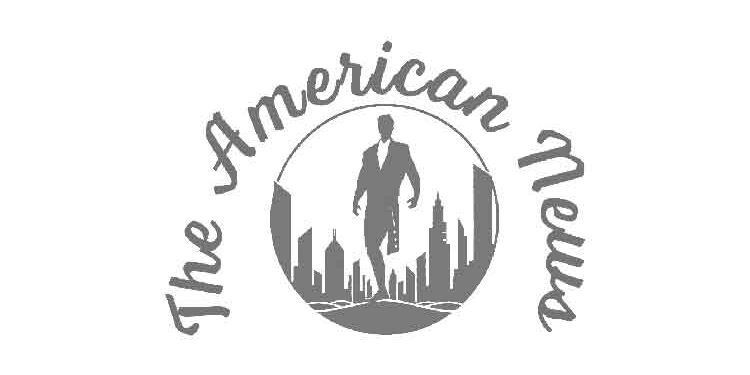CHARLESTON, S.C. (WCSC) – Hurricane Hugo, a Category 4 hurricane, made landfall 35 years ago just north of Charleston near SullivanŌĆÖs Island.
For people who lived in the Lowcountry, it was a night they still remember.
Hugo originated from a tropical wave that moved off the African coast on Sept. 9, 1989, the National Weather Service said. By the next day, it had already shown enough organization to be classified as a tropical depression, becoming the 11th depression of that yearŌĆÖs Atlantic hurricane season.
It became a Category 1 hurricane on Sept. 14, and by the following day, it had grown to become a rare Category 5 hurricane with maximum sustained winds near 160 mph.
It weakened the next day to a Category 4, and it eventually weakened further when it reached Puerto Rico. But the weakening was short-lived.
The Live 5 team looked back on the 25th anniversary of Hurricane Hugo’s landfall. The Category 4 storm made landfall in the Charleston area on Sept. 21, 1989.ŌĆśPlease leave nowŌĆÖ: City urges evacuation ahead of HugoŌĆÖs landfall
From news briefings held by Charleston leaders, one three-word phrase might be the one that stands out more than all the others.
It was the stern warning of retired bond court judge Linda Lombard, who at the time of Hugo was a Charleston County Council member.
ŌĆ£If you want to leave Charleston, please leave now,ŌĆØ she said. She warned that Hugo was the size of South Carolina and repeated the phrase, ŌĆ£please leave now.ŌĆØ
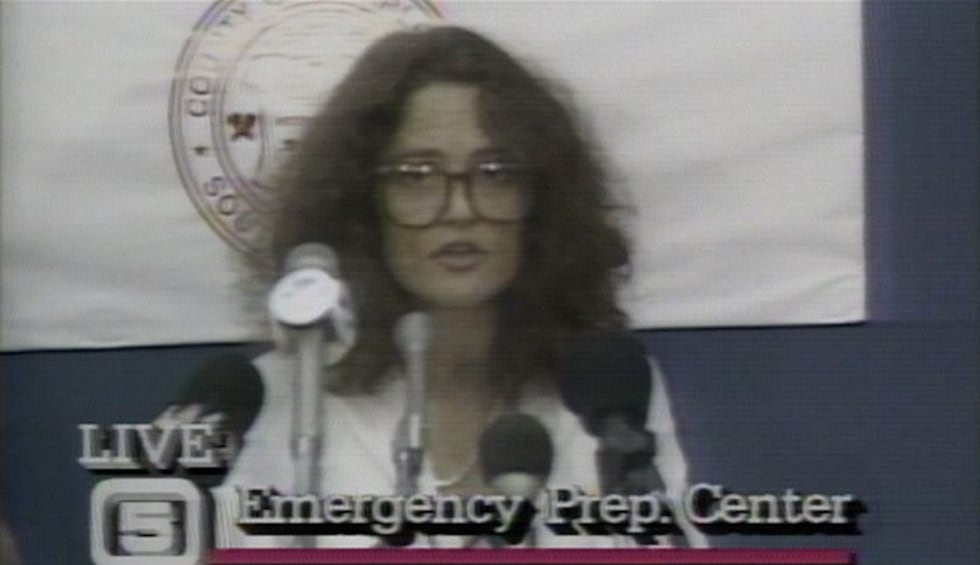 Before Hurricane Hugo made landfall at Sullivan’s Island, then-Charleston County Council member Linda Lombard urged residents to “please leave now” during a live news conference.(Live 5)
Before Hurricane Hugo made landfall at Sullivan’s Island, then-Charleston County Council member Linda Lombard urged residents to “please leave now” during a live news conference.(Live 5)
In 2009, for the 20th anniversary of the stormŌĆÖs landfall, Lombard recalled the speech was carefully crafted in the hopes of saving lives.
ŌĆ£We had to evacuate the county or we would have had massive loss of life and we knew that,ŌĆØ Lombard said. ŌĆ£We prepared it and went over it and over it and over it, just to pick the right words to try to encourage people to move right away.ŌĆØ
Since then-Gov. Carroll Campbell had not yet declared a state of emergency the night before Hugo made landfall, Lombard said they could not demand that people leave: they could only ask them to do so. The goal of that famous phrase, she recalled, was clear.
ŌĆ£I knew if those words didnŌĆÖt work, we were going to be in grave trouble,ŌĆØ she said.
ŌĆśLargest, most severe hurricane in anyoneŌĆÖs memoryŌĆÖ
Charleston Mayor Joe Riley realized he was dealing with people who had not experienced a major hurricane in decades. He worried about the effects of a storm surge on the peninsula and the barrier islands, which he knew could be catastrophic.
ŌĆ£ItŌĆÖs a wall of water,ŌĆØ Riley recalled on the 30th anniversary of HugoŌĆÖs landfall. ŌĆ£And if youŌĆÖre in there and itŌĆÖs over you, youŌĆÖre gone.ŌĆØ
In an interview with the National Weather Service on HugoŌĆÖs 25th anniversary, Riley said the city had the benefit of having seen the level of destruction Hugo had caused in Puerto Rico and understood that Hugo was ŌĆ£a killer hurricane.ŌĆØ
Live 5 Chief Meteorologist Bill Walsh said a big blocking ridge to the north off the coast and an upper low over the central Gulf created the ŌĆ£perfect ingredientsŌĆØ for a strike in the Lowcountry.
ŌĆ£There was really no place for that storm to turn,ŌĆØ he said.
Former Charleston Mayor Joe Riley recalls Hurricane Hugo 30 years after its 1989 landfall in this interview from 2019.
Riley recalled for the National Weather Service telling his staff that Hugo represented an ŌĆ£opportunity,ŌĆØ a comment he said made them look at him oddly.
ŌĆ£And I said, ŌĆśItŌĆÖs an opportunity because if this hurricane comes our way, then we will have the chance to serve our citizens when they need us more than theyŌĆÖve ever needed us before,ŌĆØ he said.
To send a clear message to those residents about how seriously the city was taking the storm, Riley ordered Charleston City Hall be boarded up days before the stormŌĆÖs expected arrival. He also asked Gulf Coast mayors for advice they never got when they went through the same thing.
ŌĆ£You have to convince people their lives are at stake,ŌĆØ Riley said. ŌĆ£People do not die from hurricanes because they evacuate. But thousands of people have died in hurricanes in the United States of America because they didnŌĆÖt evacuate.ŌĆØ
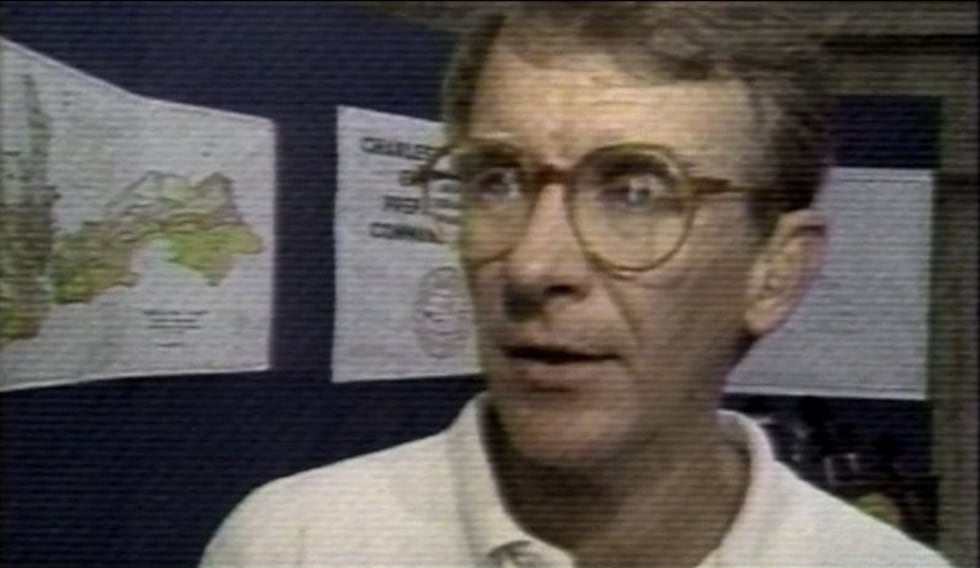 Then-Charleston Mayor Joe Riley urged people to evacuate ahead of Hurricane Hugo.(Live 5)
Then-Charleston Mayor Joe Riley urged people to evacuate ahead of Hurricane Hugo.(Live 5)
Before the storm arrived, he made a dire prediction designed to make people take the threat seriously: ŌĆ£This will be the largest, most severe hurricane in anyoneŌĆÖs memory.ŌĆØ
Despite weakening over Puerto Rico, forecasts continued to place the storm as targeting either North or South Carolina. Hugo would reorganize as it moved between the Bahamas and South Carolina.
By the night of Sept. 21, it had restrengthened to a Category 4 and made landfall at around midnight on Sept. 22, with maximum sustained winds said to have been between 135 and 140 mph.
Walsh recalled the day leading up to that deadly night was ŌĆ£actually a beautiful day.ŌĆØ
ŌĆ£It was sunshine, and it was amazing, and itŌĆÖs hard to believe that night at midnight weŌĆÖd have a category 4 hurricane,ŌĆØ Walsh recalled in 2019.
ŌĆśA tough timeŌĆÖ for Live 5ŌĆ▓s Charlie Hall
But as that beautiful day wore on, the mood of legendary Live 5 broadcaster Charlie Hall, normally a jovial personality in the WCSC-TV studios, changed dramatically, retired anchor Bill Sharpe recalled.
Hall spoke the first words over the air, ŌĆ£Channel 5 is now alive,ŌĆØ to officially launch the LowcountryŌĆÖs first television station in 1953. Hall served as the lead weatherman and was anxiously watching the ominous updates on the storm from the National Weather Service.
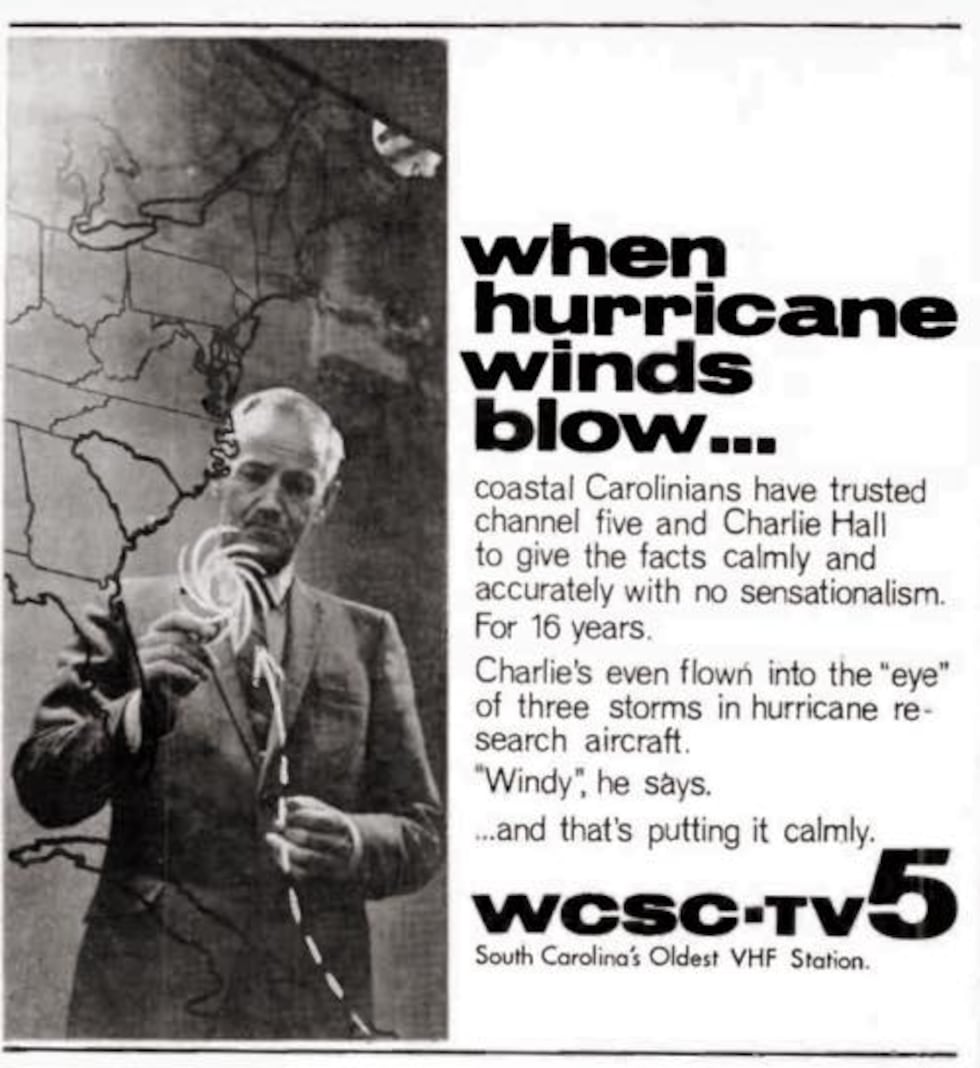 The late Charlie Hall, who appeared in this ad from roughly 1969, would lead coverage of Hurricane Hugo 20 years later.
The late Charlie Hall, who appeared in this ad from roughly 1969, would lead coverage of Hurricane Hugo 20 years later.
ŌĆ£Then the last update that he brought in, IŌĆÖll never forget that he looked at me and he shook his head and he said, ŌĆśBill, itŌĆÖs coming. And itŌĆÖs coming straight for us,ŌĆÖŌĆØ Sharpe said.
Hall wanted to stay on the air at least until the power went out, Sharpe remembered.
ŌĆ£That was our protocol because that was our job. Our job was to inform the public, our viewers, as much as we could until we couldnŌĆÖt anymore,ŌĆØ he said.
For Hall, who had worked for Channel 5 for more than 36 years at the time, there was no question about that.
But Harold Crump, who was then the owner of the station, made the call to evacuate the building, which was located on East Bay Street in downtown Charleston at that time. He ordered the staff to leave and ordered that as much critical equipment as possible be evacuated as well.
Hall himself recalled the heated argument behind the scenes in a 1996 interview.
ŌĆ£When he came and gave me the order, ŌĆśWe have to leave this building,ŌĆÖ not once, not twice but on three occasions, and the third occasion was a shouting match, [I said], ŌĆśNo, I donŌĆÖt want to go, I want to stay here another two or three hours and he wouldnŌĆÖt allow it,ŌĆØ Hall said.
WCSC-TV’s then-owner, Harold Crump, joins Live 5’s Charlie Hall and Bill Sharpe on Sept. 21, 1989, to sign off so the staff could evacuate the studio.
Sharpe said he believed that to Hall, evacuating the studio meant that he wasnŌĆÖt doing his job.
ŌĆ£Charlie was furious,ŌĆØ Sharpe said. ŌĆ£But Crump explained to our viewers and to us at the same time. ŌĆśLook, I know you to want to stay on as long as you can. But we got to get off the air before the hurricane hits so we can save what we can.ŌĆØ
Hall was upset by the decision but valiantly held his emotions in check on camera.
ŌĆ£I mean, hereŌĆÖs Charlie. HeŌĆÖs been on the air at that point, 35 years, only here. And every time a hurricane hit came close by, he stayed,ŌĆØ Sharpe said. ŌĆ£And so now the biggest hurricane, maybe of the past 50 years at that point to hit Charleston, was coming and heŌĆÖs been told, ŌĆśYouŌĆÖve got to go.ŌĆÖŌĆØ
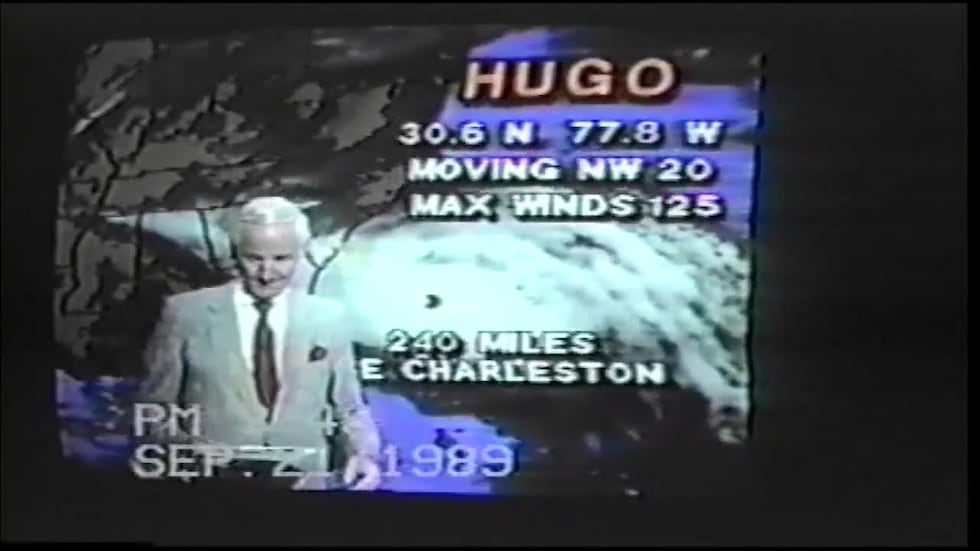 The late Charlie Hall anchored Live 5’s coverage of Hurricane Hugo as it approached the coastline on Sept. 21, 1989. (Source: Live 5)
The late Charlie Hall anchored Live 5’s coverage of Hurricane Hugo as it approached the coastline on Sept. 21, 1989. (Source: Live 5)
Sharpe and Hall signed off from the stationŌĆÖs downtown facility and switched to anchor Debi Chard, who was broadcasting from the Charleston County Emergency Operations Center until the power went out.
In less than 48 hours, the station was back on the air but from a makeshift studio set up at the stationŌĆÖs tiny transmitter building in Awendaw. The technical crew had raced to get a camera connected so anchors could cover the stormŌĆÖs aftermath and the LowcountryŌĆÖs recovery.
But the crew quickly realized there was a problem, retired executive producer Jim DeMauro said in 2019: In the rush to outfit the makeshift studio as quickly as possible, no one had brought along a tripod for the camera.
ŌĆ£So, they got duct tape and taped a camera down to a camera shipping box on wheels,ŌĆØ he said.
That was how they were able to shoot anchors like Bill Sharpe who appeared in street clothes, unshaven, relaying information as it came into the makeshift newsgathering center.
ŌĆ£Charlie was hit hard by everything,ŌĆØ Sharpe said. ŌĆ£He was depressed. It was a tough time for Charlie.ŌĆØ
In hindsight, Hall acknowledged years later that the decision to leave the studio was the right one. Water from the storm surge would reach several feet in the studio, causing severe water damage. If the building had not been evacuated, expensive electronic equipment might have been lost in addition to the hours of old film and video archive footage that had to be thrown out after the flooding.
Months later, however, an encounter with a viewer convinced Hall that leaving the building had been the right decision.
He recounted the story of pulling into a gas station after he noticed someone following him and desperately trying to flag him down.
ŌĆ£He grabbed my hand while I was still putting gas in the car,ŌĆØ Hall said in 1996, shortly before his death. ŌĆ£And he said, ŌĆśI told my wife if I ever saw you, I was going to stop you and shake your hand.ŌĆÖ And I said, ŌĆśFor what?ŌĆÖ And he said, ŌĆśFor saving our lives.ŌĆÖ He pointed out that his house on SullivanŌĆÖs Island was totally demolished. And he said he and his wife had discussed it, and said they planned to stay there until they saw Charlie Hall leave. And this guy was dead serious.ŌĆØ
That moment made Hall realize he might have accomplished more for the diehard fans waiting to take their own evacuation cue from him than he would have by staying put.
ŌĆ£To me, knowing that what I did or didnŌĆÖt do…and somebody reacted to that, that they left the low-lying beaches, and he came back to a totally demolished house, and they would have likely lost their lives,ŌĆØ Hall said, was a moment heŌĆÖd never forget.
Hugo makes landfall near SullivanŌĆÖs Island
When the storm made landfall around midnight on the night of Sept. 21 and the morning of Sept. 22, 1989, wind gusts as high as 108 mph were measured in the city of Charleston, with 107 mph at Folly Beach, the National Weather Service reported.
Mount Pleasant suffered heavy wind damage to buildings and trees. Roads were blocked by the volume of debris. The storm sunk multiple fishing boats in Shem Creek.
Bulls Bay saw what forecasters estimated was the highest storm tide at up to 20 feet. It reached 19.4 feet in nearby Awendaw, destroying the U.S. 17 bridge across Awendaw Creek.
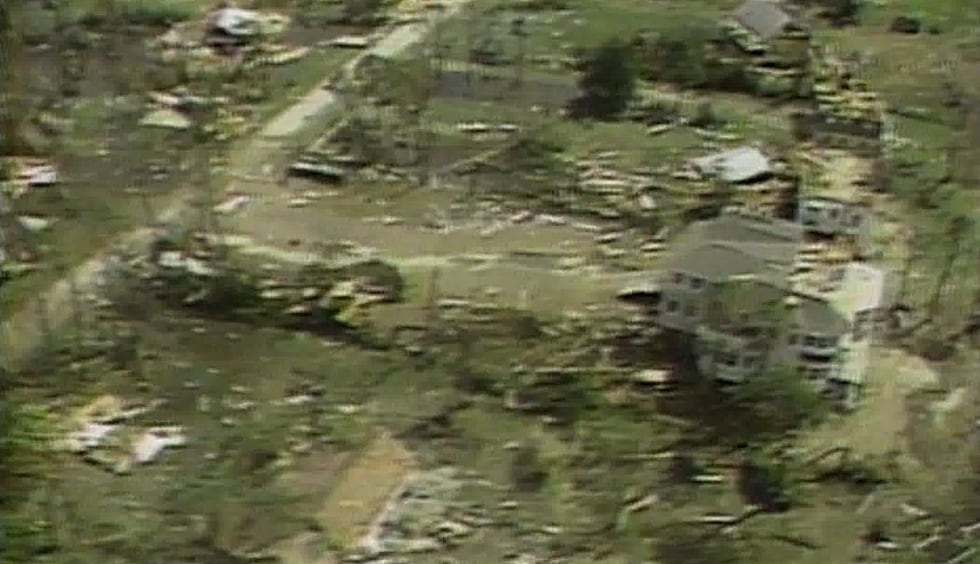 An eleven foot storm surge destroyed the Isle of Palms fishing pier and many of the beachfront homes, the National Weather Service said.(Live 5)
An eleven foot storm surge destroyed the Isle of Palms fishing pier and many of the beachfront homes, the National Weather Service said.(Live 5)
In nearby McClellanville, Hugo destroyed homes and businesses. The storm surge there dropped boats across highways.
Lincoln High School in McClellanville had been chosen as a shelter, but it was only about 10 feet above sea level. When HugoŌĆÖs 16-foot storm surge reached that building, 6 feet of seawater had storm victims hanging on to ceiling tiles to ride out the surge.
In downtown Charleston, up to 80 percent of roofs were damaged, the National Weather Service estimated. More than 100 buildings suffered serious structural damage or collapsed.
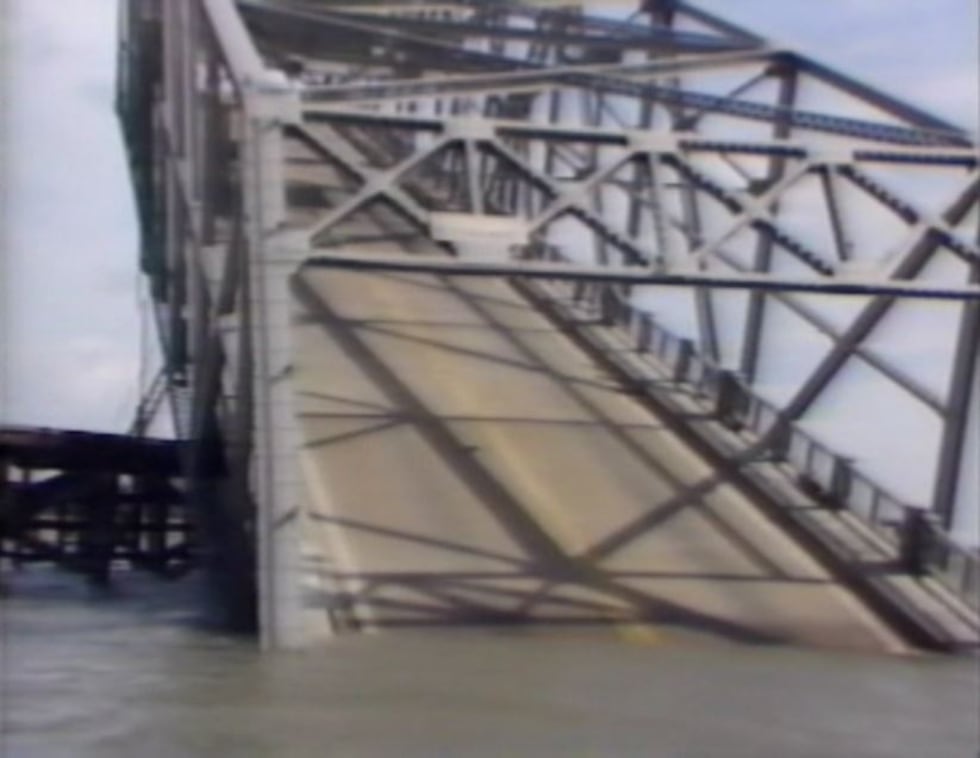 A large section of the Ben Sawyer Bridge was heavily damaged by Hurricane Hugo.(Live 5)
A large section of the Ben Sawyer Bridge was heavily damaged by Hurricane Hugo.(Live 5)
An 11-foot storm surge wiped out the Isle of Palms fishing pier. A large section of the Ben Sawyer bridge was twisted and left dangling into the water.
Approximately three-quarters of the trees in the 250,000-acre Frances Marion National Forest were blown down.
The stormŌĆÖs rapid motion combined with its large size meant hurricane-force winds were able to reach inland areas that almost never see such severe conditions, the National Weather Service said.
At 2 a.m., just two hours after landfall, the storm was already approximately halfway between Charleston and Sumter, with maximum sustained winds estimated around 100 mph, still a Category 2 hurricane. Shaw Air Force Base in Sumter recorded a wind gust of 109 mph as the eye of Hugo brushed by just to the south.
By 5 a.m., HugoŌĆÖs center was crossing Interstate 77 between Columbia and Charlotte with wind gusts at the Charlotte International Airport measured at 63 mph, but the Queen City would record wind gusts of up to 100 mph.
By daybreak, the National Weather Service could no longer see a clear image of HugoŌĆÖs eye in satellite and radar images. But it wasnŌĆÖt until it reached between Hickory and Morganton, North Carolina, that the hurricane was finally downgraded to a tropical storm.
Hugo was the only Category 4 hurricane to make landfall on the mainland United States in the 1980s, and at that time, it was the most destructive in the countryŌĆÖs history in terms of damage estimates, which reached $7 billion.
It was blamed for 56 deaths in the Caribbean and 29 in the United States.
Copyright 2024 WCSC. All rights reserved.
Source link : http://www.bing.com/news/apiclick.aspx?ref=FexRss&aid=&tid=66ef5705329146b5bb767282645890f3&url=https%3A%2F%2Fwww.live5news.com%2F2024%2F09%2F21%2F35-years-later-hurricane-hugos-landfall-not-forgotten%2F&c=2017401088738961833&mkt=en-us
Author :
Publish date : 2024-09-21 11:47:00
Copyright for syndicated content belongs to the linked Source.

